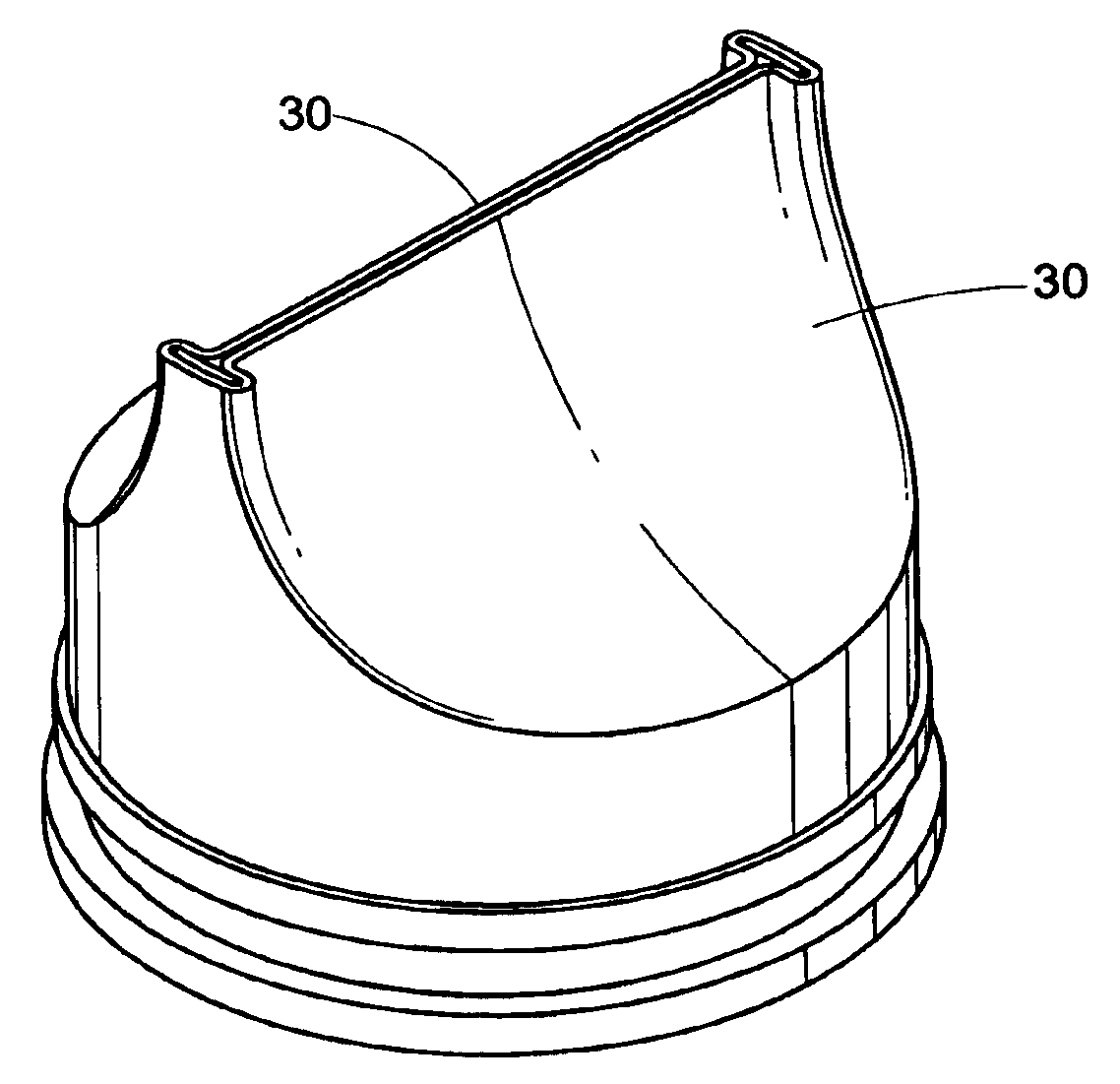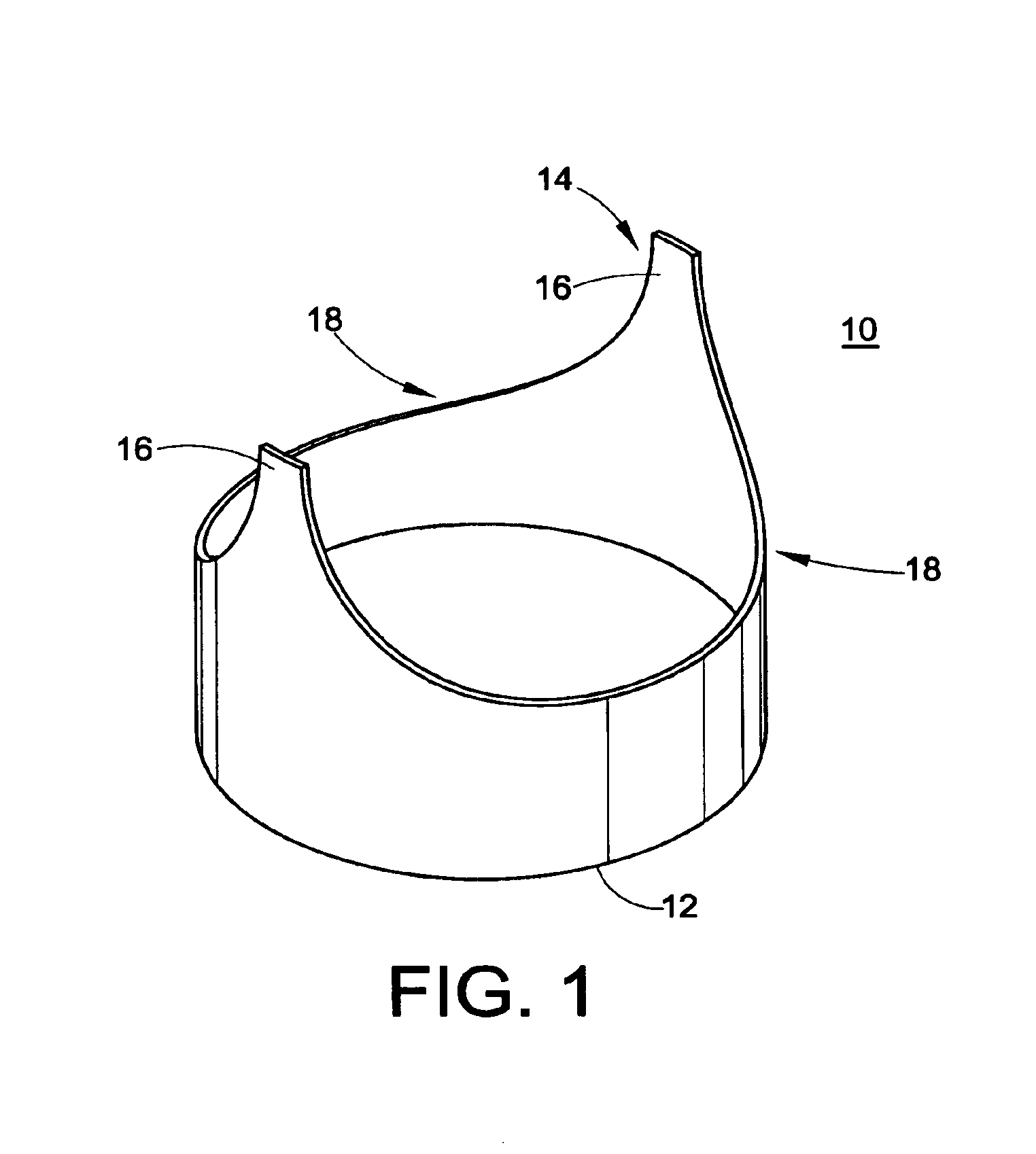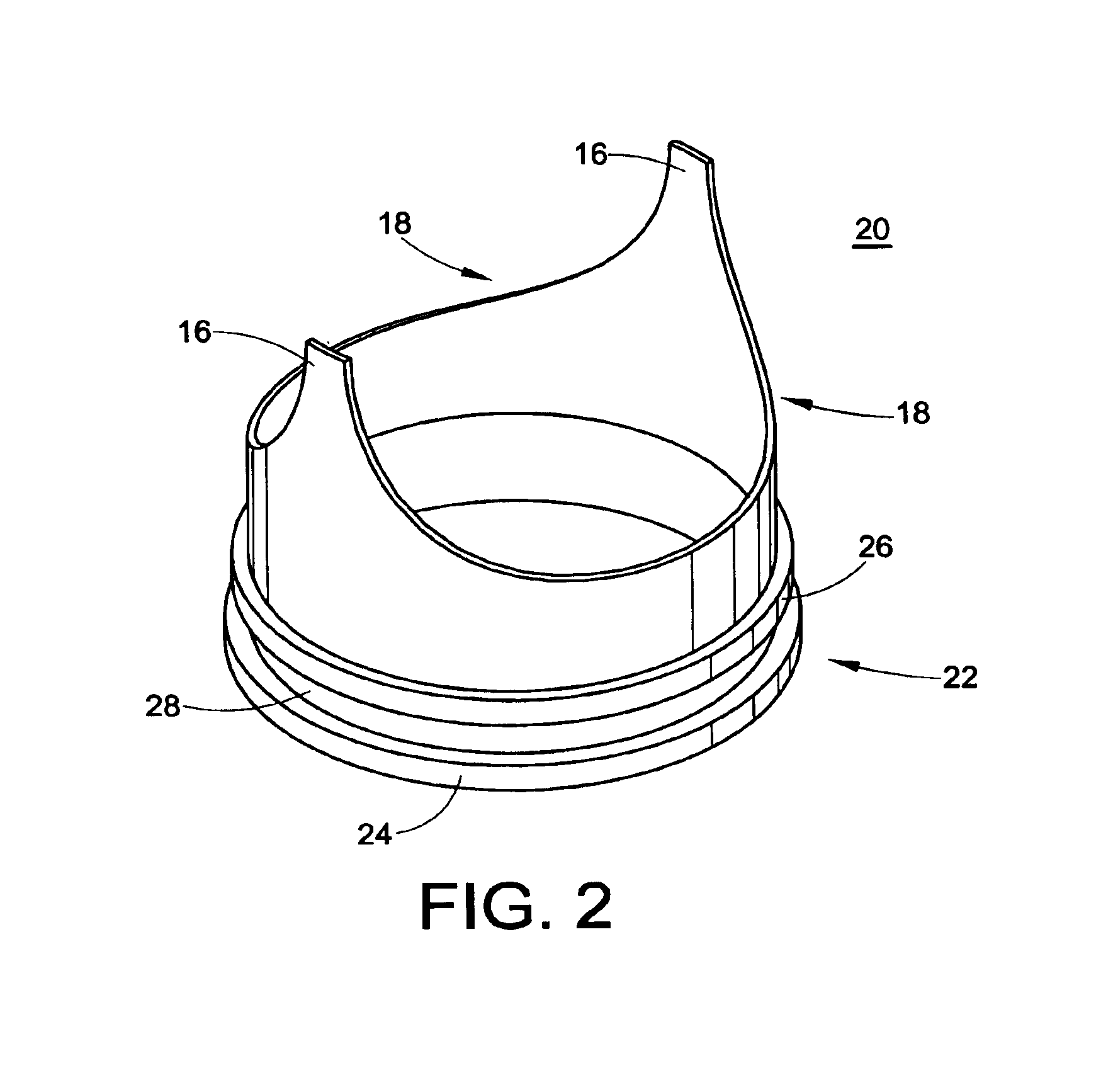Implantable venous valve
a venous valve and implantable technology, applied in the field of vascular implants, can solve the problems of reducing the flow of oxygenated blood to the brain, and possibly reducing the volume of blood available to the right heart, so as to enhance bio- and blood compatibility, restore native valve function, and duplicate the effect of function
- Summary
- Abstract
- Description
- Claims
- Application Information
AI Technical Summary
Benefits of technology
Problems solved by technology
Method used
Image
Examples
Embodiment Construction
[0052]It is to be understood that both the foregoing general description and the following detailed description are exemplary and explanatory only and are not restrictive of the invention as claimed.
[0053]The present development is directed to a prosthetic vein valve for implantation within a blood vein or vascular graft, e.g., to replace a diseased or malfunctioning valve. The valve is made from synthetic material, preferably a polymeric material. The valvular prosthesis includes leaflets mounted on a support and positioned within a conduit, all of which cooperate to permit blood flow in one direction only. The leaflets will normally be in an open position, permitting blood to flow through the vein. The leaflets will close, blocking the flow of blood when blood begins to backflow in a direction opposite from its normal flow.
[0054]The implantable venous valve prosthetic device of the present invention is particularly suited to restore physiologic blood flow to the human leg in those...
PUM
 Login to View More
Login to View More Abstract
Description
Claims
Application Information
 Login to View More
Login to View More - R&D
- Intellectual Property
- Life Sciences
- Materials
- Tech Scout
- Unparalleled Data Quality
- Higher Quality Content
- 60% Fewer Hallucinations
Browse by: Latest US Patents, China's latest patents, Technical Efficacy Thesaurus, Application Domain, Technology Topic, Popular Technical Reports.
© 2025 PatSnap. All rights reserved.Legal|Privacy policy|Modern Slavery Act Transparency Statement|Sitemap|About US| Contact US: help@patsnap.com



